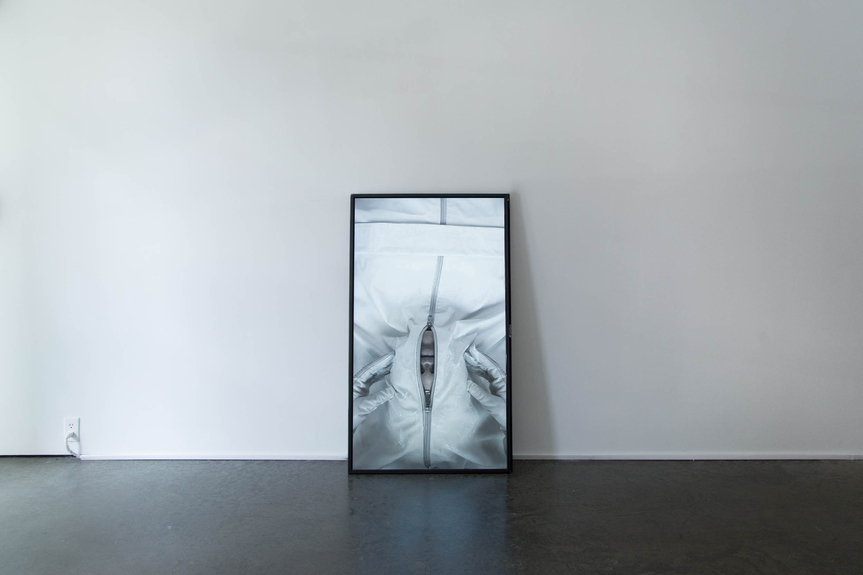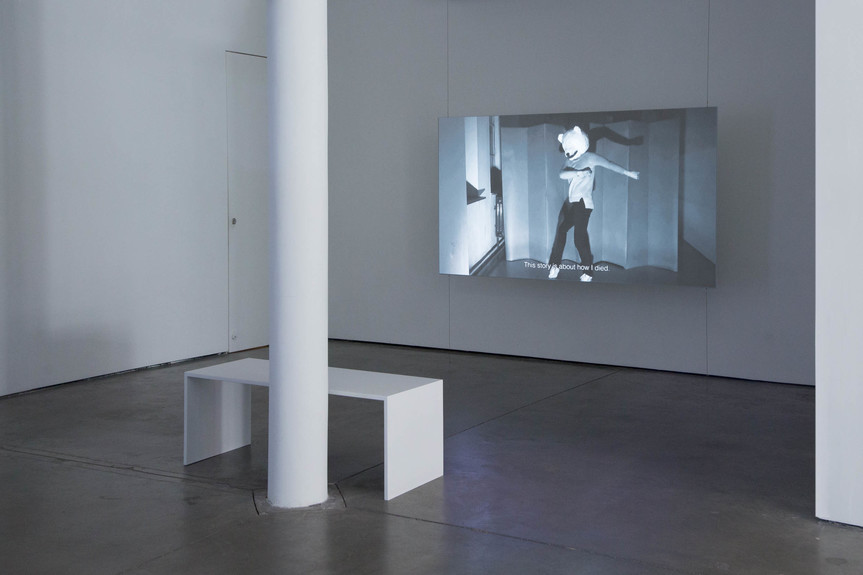-
From Current Issue
-
- Editor’s Letter Fire in the Heart
- Reviews I Gusti Ayu Kadek Murniasih
- Reviews 11th Seoul Mediacity Biennale: “One Escape at a Time”
- Dispatch Networked China
- One on One Monira Al Qadiri on Yukio Mishima
- Essays The rise of independent art spaces in pandemic-era Shanghai
- Features Tuan Andrew Nguyen
- Table of Contents
- Web Exclusives
- Archive
- Subscribe

R
E
V N
E
X
T
Installation view of SEO YOUNG CHANG’s (left) Circle, 2017, single-channel video: 8 min; and (right) Nameless Disease, 2016, two-channel video, looped, at “Off,” Doosan Gallery, New York, 2019. Courtesy Doosan Gallery, New York.
Seo Young Chang’s solo exhibition at Doosan Gallery, “Off,” was a rare opportunity to see the emerging artist’s video works, screenings of which have mostly been limited to South Korea and Germany (Chang received her MA from Berlin University of the Arts). The title of the show suggested imbalance, that the figures featured in Chang’s work were irregular, their existence fragile and questioned, which was further compounded by the videos being looped and the off-kilter actions recurring. It also implied that the videos were waiting to be “turned on” and corrected—an impossible state to achieve, the show seemed to say, although such a curatorial message was hampered by the poor arrangement of the videos within the gallery space.
Walking through the exhibit, one immediately saw Cream (2018) playing opposite the reception desk on a vertical screen leaned against the wall. In the mildly disconcerting video, a woman’s upper body is seen upside down. All but part of her chin, mouth, and nose are covered up in what looks like a white leather body bag nearly zipped closed. In fact, Cream was striking because that small section of flesh was the only patch of color among Chang’s four other black-and-white installations. Throughout the six-minute video, white leather-gloved hands thoroughly massage a cream along the grooves, contours, and outline of the woman’s face. The woman intermittently utters, in an uninflected, monotous voice, buzzwords used by the beauty industry to entice buyers; “life,” “firm,” “gradient,” “shining,” “long-lasting,” “young,” “healthy,” “glossy,” and “clean” are just a few of them. Cream turns on the double meaning of its title, relating both to what’s used to condition leather and keep it looking radiant, and Korean skincare products, which are now a booming global business. Unfortunately, one could just make out what the woman says in Cream because of the television’s low volume and the blaring sound of Circle (2017)—a meta-textual video essay on circular time and the apocalypse, among other things—that overwhelmed the gallery space.
Going deeper into the exhibit, one viewed A Story of a Bear, Who Drowns Forever, Over and Over (2013) projected on a wall. In a single take, a woman wearing a paper-mâché bear mask tells a story involving a polar bear with a kind of interpretative dance, engaging her entire body. She presents this to the stationary camera, ceaselessly filming her. The spectactor had to wear headphones (Circle could still be heard) and yet the audio sounded distant, like a recording on an old answering machine, as if the sound were disconnected from the visuals. A buzzer rings, the woman stops in the midst of her tale and goes behind a divider wall in the background. She reappears, picking up where she left off. The buzzer goes off again; she goes behind the divider. And so on and so on until she finally completes her account. The repetition, the starting and stopping of the narrative, the performance to the camera—all of these elements make A Story of a Bear resemble an audition or a rehearsal. The singsongy tone in the woman’s voice suggests a young audience. Moreover, the story of the arctic mammal, trapped in an endless cycle of dying and death, has the whiff of a Grimms’ fairy tale, and seems to reflect on the act of narrating itself.
Seo Young Chang’s “Off” is on view at Doosan Gallery, New York, until June 8, 2019.
To read more of ArtAsiaPacific’s articles, visit our Digital Library.

















